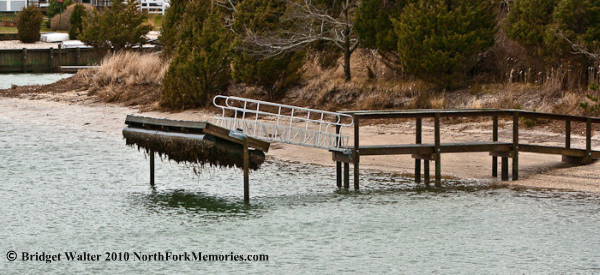At a recent Trustee work session, Southold Town Trustees agreed that in the event that permitted stairs to the beach are destroyed in a storm, that no permit will be required to rebuild and/or reinstall new stairs to the beach. The same would go for repairs to bulkheads resulting from storm damage. This is good news for everyone who has been adversely impacted by the recent Nor’easter, but Southold VOICE members have questions, including:
- Did the Trustees enshrine the agreement in new language that is now part of Town Code permanently?
- What is the Trustee definition of a “repair” exactly?
- When a neighbor’s bulkhead was damaged and had to be replaced several years ago, it was not considered a repair because it had to be replaced. Who makes the determination about emergency situations that so many residents have faced in recent weeks?
- When faced with almost inconceivable weather, how does an owner know what they can and cannot do to protect and preserve their property and the adjoining shoreline?
- Does the logic of the new agreement also apply to ice lifted or storm damaged permitted docks and pilings as well? Why would it not?

We posed these questions to Trustee Dave Bergen, and received the following response:
The Trustees met soon after the recent severe Nor’easter to discuss the loss of stairs to beaches which many people suffered. We agreed that no Trustee permit would be required to replace a permitted set of stairs to the beach which were lost in recent storms. This resulted in a larger discussion about repairs to permitted docks and bulkheads versus replacement of them. The Trustees have had this discussion before in that the Code allows for repairs to permitted structures, but not total replacement without a permit. We agreed that we need to come up with a more concrete definition of what percentage of a structure constitutes a repair. We do have language in the Code specific to emergency permits.
Dave then adds:
Speaking only for myself and not my fellow Trustees, I know firsthand what it is like to suffer catastrophic damage to a bulkhead after a storm as this happened to my family home back in 1992. At that time, the DEC set up tables in Town Hall where property owners could come in with a survey, a drawing of work required and a check, and they could fill out the application on site and received their DEC permit within a few days. The Trustees have for years granted emergency permits where a resident comes in with pictures and a letter of application for an emergency permit. An emergency permit to shore up the property is granted within a day or two. I can recall two circumstances when property owners came to a work session with pictures and a letter of application, and we voted to approve an emergency permit that very night. We recently placed into Chapter 275 language pertaining to emergency permits. Several Trustees have taken the initiative to either walk beaches or drive down road ends after severe storms to observe damage to property. Most recently, a request for an exemption to State and Federal mandated dredge windows has been applied for when the March Nor’easter closed up the interface to one channel.
We have all observed the drainage challenges created by the most recent rain storm. I am sure that the Town Code Enforcement Officer and the Bay Constables have seen the many garden hoses pumping water from basements into either catch basins or into creeks. Legally should this be allowed, no. But we need to be humanistic and do what we can to assist homeowners during extreme environmental disasters. Common sense dictates that health and safety concerns need to be given a very high priority. What is more concerning to me is the continual runoff from agricultural lands which goes unchecked. The Trustees commended the Town Board when they adopted the new drainage code a few years ago. But we also submitted written comments that it should not contain a blanket exemption for agricultural lands. While our concerns were not ignored, the agricultural exemption was maintained. Anyone who wants to see the environmental impact of this action needs to simply take a ride down to the large dip in New Suffolk Avenue where it intersects with Deep Hole Creek. It is easy to spot, just look for the two huge drainage pipes that go from the road directly into Deep Hole Creek. The second location is Mattituck Inlet at the end of Mill Lane. Inches of mud will be found on top of bulkhead whalers in this area after heavy rains. The Trustees have lobbied for several years now for these two locations to be addressed by the Storm Water Runoff Committee. We hope that the Town will perform remediation efforts at these and other locations soon.
I care deeply for our environment and the Peconic Estruary. But when we face extraordinary conditions thrown at us by Mother Nature, we need to do what is right for both private property owners and Mother Nature.



Comments ( 3 )